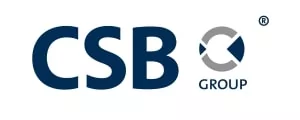On the 2nd of August 2021, the European Banking Authority (‘EBA') issued a consultation paper on the new draft Guidelines on the role, tasks and responsibilities of anti-money laundering and countering the financing of terrorism (‘AML/CFT') compliance officers.
Once published, the final version of these Guidelines will be binding and applicable to all financial sector operators that are within the scope of the AML Directive. Therefore, subject persons are naturally being urged to review the draft guidelines and submit their feedback. The consultation runs until the 2nd of November 2021, and thus any comments or feedback on the draft Guidelines may be sent directly to the EBA via the EBA's consultation page.
Salient takeaways from the Guidelines
- The Guidelines address the whole AML/CFT governance set-up at an EU level. This is done by setting clear expectations of the role, tasks and responsibilities of the AML/CFT compliance officer, the management body and the interplay between the two, including how such functions should be carried out at group level. AML/CFT compliance officers are required to possess a sufficient degree of seniority, which would entail the power to propose all necessary or appropriate measures to ensure compliance with internal AML/CFT measures by the management body in its supervisory and management functions.
- The Guidelines outline the tasks and roles of the members of the management board, or the senior manager, in a situation where no such board exists, who are in charge of the overall AML/CFT function, and on the functions of group AML/CFT compliance officers. The information being received by the management body must be comprehensive enough to allow it to make informed decisions. Therefore, the draft Guidelines set out the basic information that as a minimum should be included in the activity report of the AML/CFT compliance officer to then be presented to the management body.
- The Guidelines also provide for instances where a financial services operator forms part of a group. In this case, the draft Guidelines provide that a Group AML/CFT compliance officer should be appointed by the parent company to ensure the establishment and implementation of effective group-wide AML/CFT policies and procedures besides addressing any shortcomings in the AML/CFT framework affecting the entire group or a large part of the group.
The provisions of these Guidelines shall be applied in a proportionate manner, given the variety of financial sector operators within the scope of the AML Directive. These guidelines are also in line with existing ESA guidelines, in particular:
- The revised Guidelines on internal governance under the capital requirements Directive (CRD);
- The revised joint ESMA and EBA Guidelines on the assessment of the suitability of members of the management body;
- The draft Guidelines on the authorisation of credit institutions; and
- The draft Guidelines for common procedures and methodologies for the supervisory review and evaluation process (SREP) and supervisory stress testing.
Originally Published 06 August 2021
The content of this article is intended to provide a general guide to the subject matter. Specialist advice should be sought about your specific circumstances.

